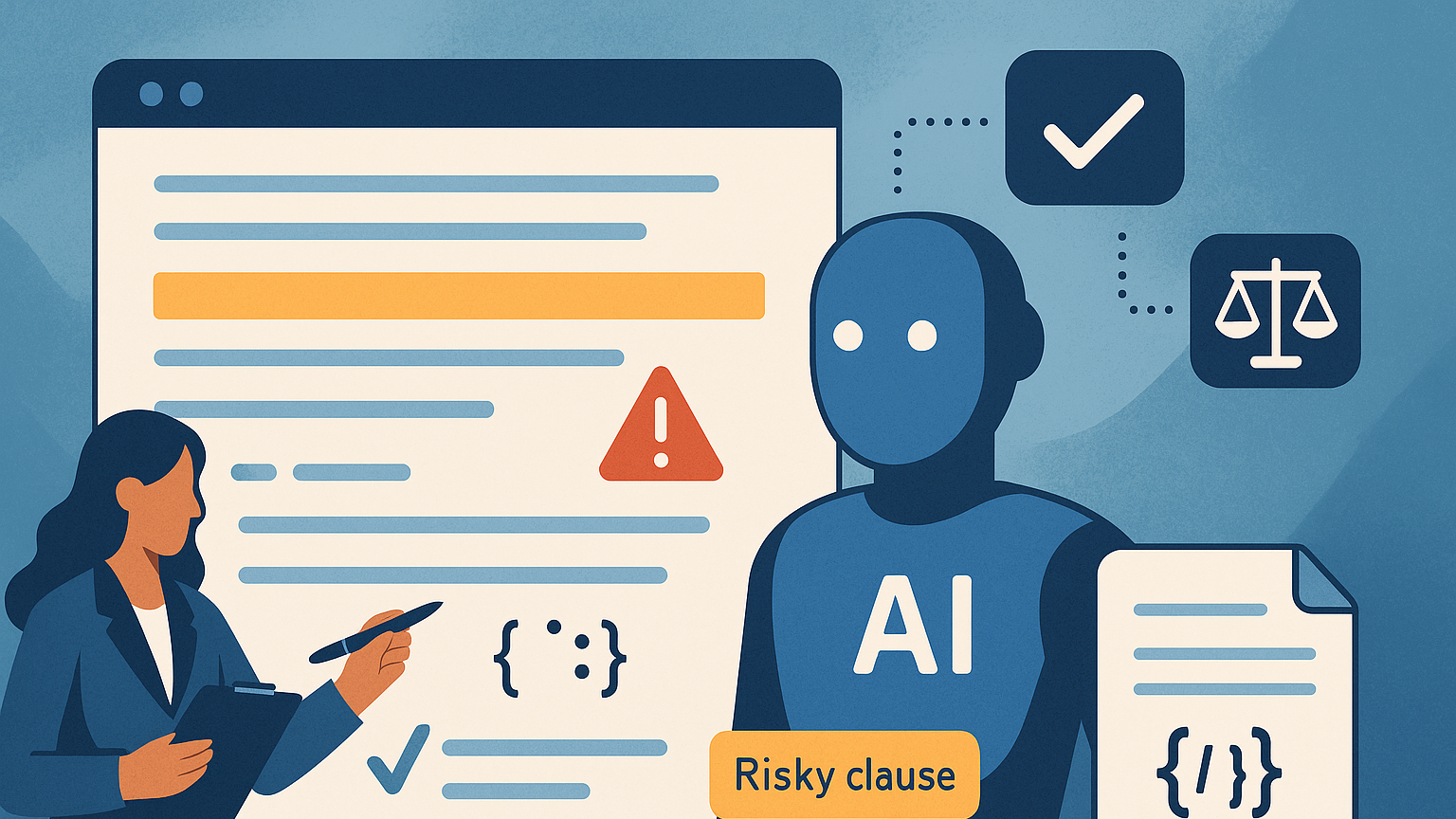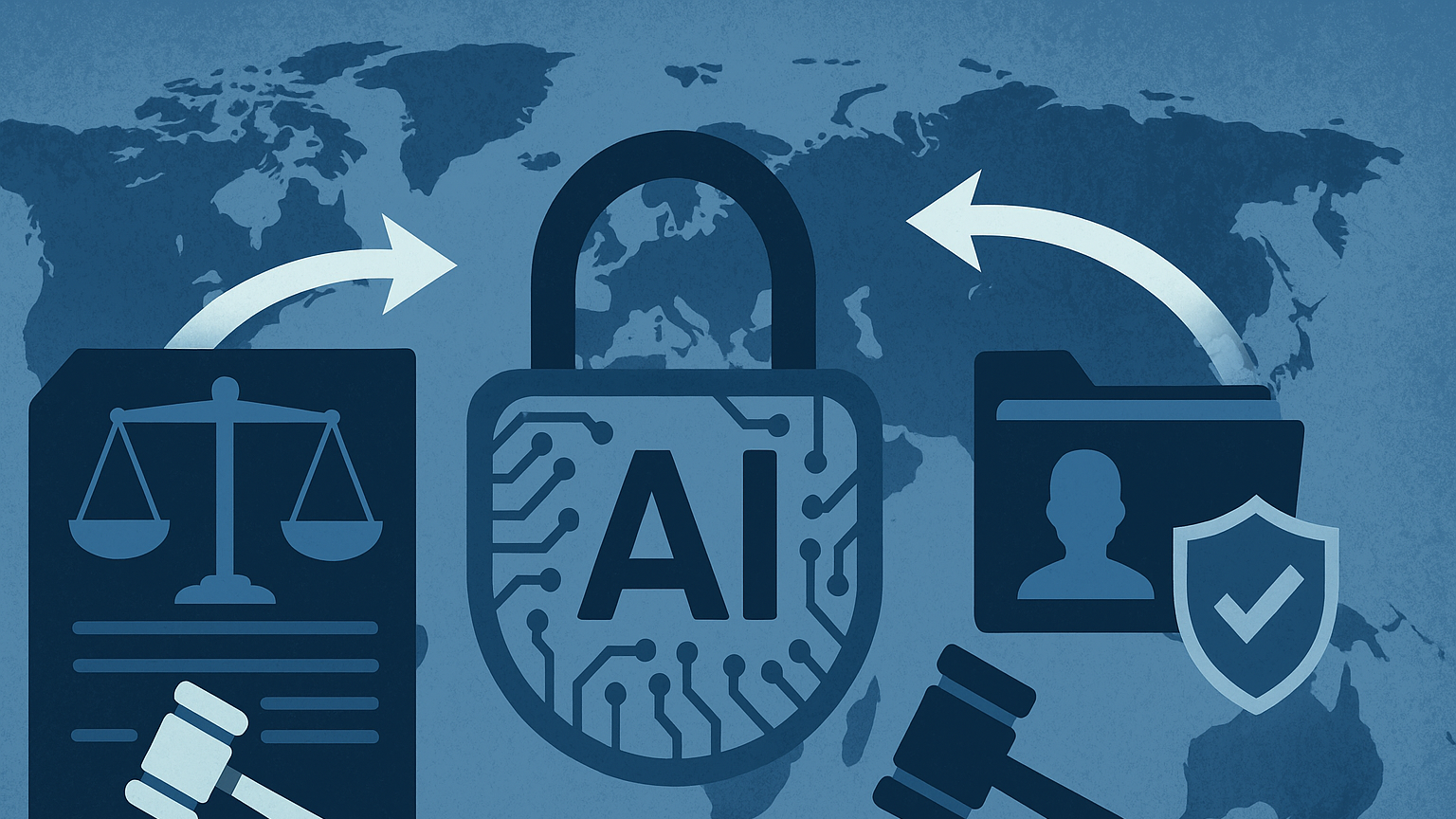
AI Awareness for Legal Document Templates
AI is reshaping the way you create, manage, and review legal document templates. When you’re responsible for contracts, policies, or compliance documents, AI can feel like both a powerful assistant and a risky new tool. This article gives you clear, practical insights about how AI affects legal document templates in the context of risk management, compliance, and professional services. You’ll learn which AI capabilities matter, the real benefits you can expect, and how to reduce the pitfalls that come with automating legal drafting and review.
Why AI matters for legal document templates
AI matters because legal document templates are both high-volume and high-impact. You likely rely on templates for NDAs, engagement letters, employment agreements, and vendor contracts; small drafting inconsistencies or missed clauses can create material risk. AI helps you scale consistent language, detect anomalies faster, and reduce manual rework. At the same time, AI changes the locus of risk—from purely human drafting errors to model-driven inaccuracies, privacy concerns, and oversight gaps—so you need to be aware of both the upsides and the new responsibilities you adopt when using these tools.
How AI is changing your workflow
AI integrates into your workflow in multiple ways: drafting, clause recommendation, risk scoring, redlining assistance, and automated negotiations. Instead of starting from a blank document, you prompt an AI engine or use a template tool that suggests language, flags risky terms, and populates variables automatically. That shifts time from repetitive typing and manual clause hunting to higher-value tasks, like negotiating commercial terms and advising stakeholders. It also means your review processes must adapt so human checks are applied where AI is most likely to err or where legal judgment is essential.
Types of AI tools used for templates
Large language models (LLMs) for drafting
LLMs generate natural language text from prompts and are useful for drafting and rephrasing clauses. You’ll find LLMs embedded in contract-authoring platforms to draft whole agreements from prompts or to produce alternative clause language. Their strength is fluency and adaptability, but you must treat their outputs as draft material, not final legal advice—especially because they can produce plausible but incorrect statements.
Retrieval-augmented generation (RAG) for using your corpus
RAG models combine an LLM with a retrieval system that fetches relevant clauses, past agreements, or policies from your document repository before generating outputs. If you want AI to suggest language consistent with your firm’s precedent library, RAG can help by grounding responses in your internal documents. That reduces hallucinations and keeps language aligned with your templates—provided your underlying repository is well-curated and indexed.
Contract analytics and clause extraction
AI-powered analytics tools classify clauses, extract key metadata, and score risk profiles across a portfolio of contracts. When you run a batch of agreements through such a tool, you’ll get actionable insights—like how often a vendor requires a specific indemnity or which contract types consistently deviate from your standard. Those insights inform template updates and risk thresholds for different deal sizes.

Robotic process automation (RPA) and integration tools
RPA automates repetitive tasks like populating variables, routing documents for signature, and updating contract databases. When combined with AI, RPA can handle complex workflows—such as generating a contract, extracting key dates, creating calendar reminders, and triggering renewal workflows—freeing your legal ops team for higher-impact work.
Benefits you can expect
Faster drafting and turnaround times
AI reduces the time it takes to produce a first draft or incorporate standard changes. You can generate an initial agreement in minutes, and automate routine modifications, leading to faster negotiation cycles and reduced time to revenue. For high-volume templates like NDAs or statements of work, this creates significant productivity gains.
Greater consistency and reduced friction
AI helps standardize language across teams and offices, reducing local deviations that creep into templates. When AI is trained or configured to your approved clauses and playbooks, you’ll see fewer noncompliant deviations and fewer corrective revisions. This consistency reduces legal risk and simplifies downstream processes like compliance monitoring and reporting.
Smarter risk detection and prioritization
AI can highlight risky clauses and provide risk-scored recommendations so you can focus on the exceptions that matter. Instead of manually reviewing every contract line-by-line, you prioritize high-risk deals or non-standard terms, making your limited legal bandwidth more effective.

Cost savings and scalability
By automating routine drafting and review tasks, you’ll reduce billable-hour expenses and the time spent on low-value work. This frees your in-house counsel to advise on strategy and complex negotiations, while routine documents are handled efficiently by AI-augmented workflows.
Risks and challenges you should watch for
Model hallucination and accuracy gaps
LLMs can generate language that sounds authoritative but is incorrect or inconsistent with legal intent. You must validate any AI-generated clause against your precedent and regulatory requirements to avoid introducing legal inaccuracies. Relying on AI outputs without human verification creates the risk of embedding errors into contracts that later become litigation points.
Bias and fairness in automated decisions
If your templates feed into AI systems that make decisions—such as automatic approvals, pricing, or employment contract terms—biases in training data can produce unfair outcomes. You should audit the data and decision logic regularly to ensure fair treatment across parties and to reduce discrimination risk.
Confidentiality and data leakage
Feeding sensitive contract details into external AI systems—especially public cloud models—creates confidentiality risks. You’re often bound by client confidentiality, regulator expectations, or internal policies to safeguard contract content. Decide whether you need an isolated model or restricted access to avoid unintentional exposure of proprietary terms or personal data.
Regulatory compliance and cross-border data flows
Different jurisdictions have different rules about legal practice, data protection, and AI governance. You must consider whether using AI for legal drafting complies with attorney conduct rules, data residency requirements, and sector-specific regulations such as financial services or healthcare. Cross-border use of AI can trigger data transfer issues and regulatory scrutiny.

Unauthorized practice of law (UPL) concerns
When AI outputs go directly to clients without adequate attorney review, you risk accusations of unauthorized practice of law in jurisdictions that require licensed counsel to provide legal advice. Ensure a clear human-in-the-loop process where qualified professionals review and take responsibility for legal content.
Building governance around AI and templates
Define roles, responsibilities, and accountability
It’s essential that you define who owns template governance, who approves AI-driven changes, and who’s accountable for final legal content. Assign clear roles across legal ops, compliance, IT, and business units so that responsibilities—like model selection, vendor management, and human review—don’t fall through the cracks.
Establish usage policies and guardrails
Create policies that specify which document types can be AI-generated, required review levels, data handling rules, and approval workflows. Define risk tiers for different templates so simple NDAs may have lighter supervision than high-value master services agreements with complex indemnities.
Maintain auditable change logs
Your governance approach should include transparent audit trails for template changes, AI model versions, and who approved final drafts. This supports regulatory compliance, internal audits, and demonstrates controlled processes when explaining decisions to stakeholders or regulators.

Data handling and privacy for templates
Minimize data exposure
You should practice data minimization: only feed the information that AI needs to perform the task. Redact sensitive personal data, anonymize customer identifiers when practical, and avoid transmitting entire contract portfolios to third-party models unless necessary and secured.
Control storage, retention, and deletion
Decide on secure storage policies for AI interaction logs, drafts, and training data. Define retention periods consistent with legal holds, e-discovery obligations, and privacy requirements, and ensure mechanisms exist for prompt deletion when necessary.
Use encryption and secure access
Encrypt data at rest and in transit, use role-based access controls, and require multi-factor authentication for systems that interact with contract content. Your vendor contracts should require strong security standards, breach notification procedures, and third-party audits.
Secure deployment options and vendor considerations
On-premise, private cloud, or SaaS?
Choose a deployment that matches your risk tolerance. On-premise or private-cloud models give you greater control over data residency and model access, but they can be costlier to maintain. SaaS solutions are often quicker to deploy and integrate, but you’ll need rigorous vendor assurances about data handling, model updates, and segregation of customer data.
Vet vendors for transparency and support
When selecting vendors, evaluate their documentation on model behavior, limitations, and data practices. Request SOC reports, penetration test results, and evidence of model safety testing. Ask about model update policies, rollback procedures, and how they manage data used for training.
Contractual protections and SLAs
Negotiate SLAs, liability caps, confidentiality clauses, and IP ownership terms that reflect the legal risk profile of your documents. Ensure the contract with your vendor includes audit rights, breach notification timelines, and clear provisions for subcontractors and cross-border data transfers.
Designing templates for AI-first workflows
Make templates modular and clause-based
Design templates as modular building blocks—discrete clauses with clear metadata—so AI tools can assemble and populate agreements reliably. Modular design helps you maintain consistency and makes it easier for AI to suggest tailored clause combinations based on deal specifics.
Add machine-friendly metadata and tags
Embed metadata such as clause IDs, risk levels, variables, and negotiation notes. AI systems use metadata to retrieve the right clauses and maintain context during generation. You’ll reduce ambiguity and improve the accuracy of automated clause selection by standardizing tagging across your template library.
Provide decision rules and playbooks
Attach playbooks or decision trees to templates that explain when to choose alternative clauses, applicable negotiation levers, and business rationale. AI can surface these playbook snippets to guide users, but you should also train people on how to interpret and apply them during negotiations.
Prompt engineering and instructing AI
Give clear, constrained prompts
When you generate language, use prompts that include the template purpose, applicable jurisdiction, risk appetite, and whether the clause is for internal or external use. Clear prompts help the model produce more accurate outputs and reduce the need for heavy post-generation editing.
Use examples and “do/not do” lists
Provide examples of acceptable and unacceptable clause language. If AI is to draft a payment clause, give a canonical sample and list prohibited terms. This helps the model align with your standards and reduces inconsistent outputs.
Control verbosity and legal tone
Set explicit instructions about tone (formal, plain language), level of detail, and whether to include optional protective language. That ensures your AI-generated templates remain appropriate for the intended audience—whether for internal approvals or external counterparties.

Human-in-the-loop and review processes
Define mandatory review stages
Decide which templates require attorney sign-off before being used and which can be used with post-hoc review. For high-risk or precedent-setting agreements, require senior counsel review. For routine NDAs, you may allow business users to proceed with AI-generated drafts under certain guardrails.
Use checklist-driven reviews
Create checklists that reviewers must complete—verifying jurisdictional clauses, indemnity limits, data protection terms, and key commercial variables. Checklists reduce human oversight errors and provide a consistent standard for review across teams.
Include escalation rules
Design clear escalation rules for cases where AI suggests non-standard or conflicting language. If the AI flags high-risk terms or there is a disagreement between AI and precedent, escalation to a subject-matter expert should be automatic.
Testing, validation, and continuous improvement
Implement rigorous testing before deployment
Before you rely on AI for production templates, run the system through scenario testing, regression tests against known precedents, and red-team exercises to identify hallucinations or risky outputs. Validate across multiple jurisdictions and contract types that you handle.
Monitor performance and collect feedback
Track metrics like error rates, time-to-draft, revisions per agreement, and user satisfaction. Solicit frontline user feedback to understand where the model errs and where templates can be improved. Continuous monitoring lets you detect model drift and adjust training or prompts as needed.
Update templates and models iteratively
Treat your templates as living assets. Incorporate lessons from disputes, regulatory changes, and negotiation trends back into your templates and model prompts. Schedule regular reviews to ensure your AI-driven templates reflect current legal and commercial realities.
Version control and change management
Maintain source-of-truth repositories
Store canonical templates in a single, version-controlled repository so AI systems and humans reference the same source. This prevents divergence across teams and makes it easier to roll back changes when problems arise.
Track model and template versioning separately
Keep records of both template changes and model versions used to generate content. That allows you to trace which model produced a particular draft and to understand whether an issue stemmed from template content or model behavior.
Communicate changes to stakeholders
When you update templates or modify AI behavior, communicate changes to business units, procurement, and compliance teams. Provide training notes and rationale for updates so users adopt new language confidently and consistently.
Measuring success and KPIs you should track
Efficiency and quality metrics
Measure time saved per document, reductions in review cycles, and the percentage of documents that move forward without attorney edits. Combine efficiency metrics with quality indicators—like post-execution disputes or negotiation reversions—to ensure gains aren’t at the cost of increased legal risk.
Adoption and user satisfaction
Track number of templates used, users trained, and satisfaction scores. High adoption with positive feedback indicates your AI integration is solving real pain points and is user-friendly.
Risk and compliance metrics
Monitor the frequency of non-standard clauses, exceptions granted, and audit findings related to AI-generated documents. These metrics help you understand whether AI is improving compliance or introducing new exposures.
Compliance, ethics, and professional responsibility
Align with attorney ethical duties
If you’re a lawyer using AI, remember your duty of competence, confidentiality, and supervision. You must understand AI tools well enough to identify limitations and maintain client confidentiality. Ensure human oversight policies reflect these ethical duties.
Ensure fairness and transparency
If AI affects contract terms that influence individuals (e.g., employment contracts or consumer agreements), be transparent about automated processes and allow human review where fairness concerns arise. Explicit transparency helps mitigate regulatory and reputation risk.
Prepare for regulatory scrutiny
Regulators are increasingly focused on AI governance and data protection. Maintain clear records of your AI governance, testing results, and decision rationale so you can demonstrate compliance if regulators probe your AI-assisted contract processes.
Incident response and managing model failures
Plan for model errors and breaches
Create incident response plans covering hallucinations that generate risky clauses, data leaks, and vendor breaches. Your plan should define containment steps, communication protocols, remediation paths, and legal reporting obligations.
Revert and remediate quickly
When you find systemic AI errors—such as an incorrect indemnity clause propagated across templates—have rollback mechanisms and execution plans to correct affected documents, notify impacted stakeholders, and assess downstream impacts.
Use post-incident learning
After any incident, do a root-cause analysis and update your templates, prompts, governance, and vendor relationships to reduce the chance of recurrence. Continuous learning is critical to maintaining trust in AI systems.
Practical checklist for rolling out AI-enabled templates
- Define the scope: which templates and workflows will use AI first.
- Select deployment model: SaaS, private cloud, or on-premise.
- Vet vendors: security, transparency, and SLAs.
- Create governance: roles, review requirements, and escalation paths.
- Run pilot tests: scenario-based and red-team testing.
- Train users: prompts, playbooks, and review checklists.
- Monitor KPIs: efficiency, accuracy, and compliance metrics.
- Plan for incidents: response, rollback, and remediation.
This concise checklist gives you practical steps to move from pilot to production while keeping risk under control and maintaining operational continuity.
Two short examples you can relate to
Example 1: Automating NDAs for a global sales team
You need standardized NDAs for partner introductions across multiple jurisdictions. You configure AI to generate region-specific NDAs using your clause library and metadata rules for industry-specific confidentiality. The AI populates party names, durations, and chosen exclusions automatically while flagging any non-standard requests for attorney review. This reduced turnaround from days to hours and kept confidential terms consistent across offices, while attorneys only reviewed flagged exceptions.
Example 2: Streamlining vendor master agreements
You use AI to draft initial vendor master agreements by retrieving past negotiated terms and suggesting negotiation-ready starting positions. The system scores risk on indemnities and data protection clauses, letting procurement focus on business terms and legal on high-risk clauses. The result: fewer negotiation rounds, better adherence to policy, and measurable reductions in legal review time.
Preparing for the future: trends to watch
Specialized legal models and fine-tuning
Expect more industry- and law-specific models trained or fine-tuned on legal corpora, which will improve accuracy for niche contracts. You’ll want to evaluate these models for suitability to your jurisdiction and practice area.
Integration with contract lifecycle management (CLM) systems
AI will become more embedded into CLM tools, enabling end-to-end automation—from drafting to signature to renewal—so your focus should shift to governance of the entire lifecycle, not just drafting.
Regulatory frameworks and auditability requirements
Regulators will impose stricter requirements for AI transparency, testing, and fairness. You should prepare for more rigorous documentation and the need to demonstrate model validation and testing.
Final recommendations
Start small, prioritize high-value templates, and build governance before scaling. Use human-in-the-loop safeguards, maintain clear audit trails, and treat templates as living documents that evolve with legal, commercial, and regulatory change. Invest in training for your team so they know both the capabilities and limitations of AI. With the right controls, AI can transform your template workflows, giving you faster drafts, more consistent language, and sharper prioritization of legal effort—without sacrificing compliance or professional responsibility.
